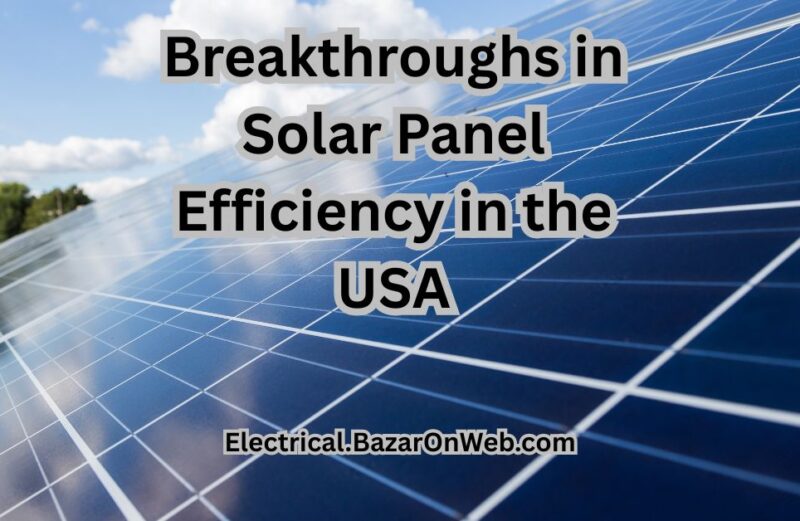The solar energy landscape in the USA is evolving faster than ever, driven by critical breakthroughs in solar panel efficiency. As demand for renewable energy soars and technology continues to advance, 2025 marks a pivotal year for innovation in photovoltaic (PV) systems. From record-breaking lab results to real-world applications, let’s explore how recent advancements are transforming the future of solar power in America.
🌞 Why Efficiency Matters
Solar panel efficiency refers to how well a panel converts sunlight into usable electricity. Higher efficiency means more energy from the same surface area—essential for both residential rooftops and large-scale solar farms. Improved efficiency also lowers installation and maintenance costs over time, making solar energy more accessible and economically viable.
⚡ Key Breakthroughs in Solar Panel Efficiency
1. Tandem Solar Cells Surpassing 30% Efficiency
Researchers at the National Renewable Energy Laboratory (NREL) and other institutions have achieved over 30% efficiency using tandem solar cells. These cells combine two materials—usually perovskite and silicon—layered together to capture more of the light spectrum. This technology could soon move from the lab to large-scale production.
2. Perovskite Solar Cells: From Labs to Rooftops
Perovskite materials are revolutionizing the solar industry due to their low cost and high efficiency. Recent innovations have increased their stability and durability, bringing them closer to commercial use. In 2025, several U.S. companies have begun pilot projects to test perovskite panels under real-world conditions.
3. Bifacial Panels with Smart Tracking Systems
Bifacial solar panels, which absorb sunlight from both sides, are gaining momentum in the U.S. when paired with smart sun-tracking mounts. These systems increase energy output by up to 40% and are especially effective in utility-scale installations in regions like California, Texas, and Arizona.
4. Quantum Dot Solar Cells
A promising area of research, quantum dot technology enables solar cells to generate power from low-light or indirect sunlight. With ongoing support from U.S. Department of Energy grants, companies are testing quantum dots to expand the efficiency range of panels even in shaded or cloudy areas.
🇺🇸 Leading American Innovators
Several U.S.-based companies and institutions are at the forefront of solar innovation:
- First Solar – Based in Arizona, First Solar is pioneering next-gen thin-film panels with improved efficiency and recyclability.
- SunPower – Known for producing high-efficiency IBC (Interdigitated Back Contact) panels, perfect for residential installations.
- Heliatek USA – Specializing in flexible organic solar cells for mobile and commercial use.
📈 What This Means for Homeowners & Businesses
With these advances, the cost per watt of solar is expected to fall while output rises. For homeowners, this means:
- Shorter payback periods (as low as 4–6 years in some states)
- More energy from less roof space
- Greater return on investment when combined with federal tax credits and state incentives
For businesses and utilities, it opens the door to:
- More competitive clean energy pricing
- Smarter grid integration
- Better land-use efficiency in solar farms
🔋 What’s Next?
Looking ahead, U.S. policy support like the Inflation Reduction Act and ongoing R&D funding is accelerating the path from lab innovation to mass deployment. With global climate goals in focus and rising demand for sustainable solutions, the solar industry in the USA is poised for its most transformative decade yet.
☀️ Final Thoughts
Solar panel efficiency breakthroughs are not just scientific milestones—they’re real-world game-changers. Whether you’re a homeowner, business leader, or energy investor, the improvements in solar technology in 2025 and beyond represent a brighter, cleaner, and more cost-effective future.
Thinking about switching to solar? Now might be the best time.

